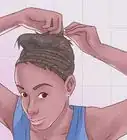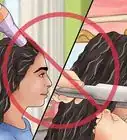This article was co-authored by Courtney Foster. Courtney Foster is a Licensed Cosmetologist, Certified Hair Loss Practitioner, and Cosmetology Educator based out of New York City. Courtney runs Courtney Foster Beauty, LLC and her work has been featured on The Wendy Williams Show, Good Morning America, The Today Show, The Late Show with David Letterman, and in East/West Magazine. She received her Cosmetology License from the State of New York after training at the Empire Beauty School - Manhattan.
There are 7 references cited in this article, which can be found at the bottom of the page.
wikiHow marks an article as reader-approved once it receives enough positive feedback. This article has 16 testimonials from our readers, earning it our reader-approved status.
This article has been viewed 597,449 times.
Due to its molecular structure and small quantity of protective oils, African hair is prone to breakage.[1] Give it some tender loving care to keep it healthy and strong. Don't hesitate to reject any product, styling treatment, or hair style that might be causing damage, no matter what the label says.
Steps
Washing, Drying, and Detangling
-
1Search for products safe for your hair. You may need to try several varieties of shampoo or conditioner before your hair health improves. Products made for African hair are a good place to start, but your search doesn't end there:
- Avoid products with sulfates, alcohol, or glycol, which strip oils or dry out hair.[2]
- Look for moisturizing shampoo or conditioner, or "leave in" options that don't need to be washed out. Look at the description and directions on the bottle to identify which products are "leave in".
- It can take several weeks to notice major changes. Give a product time to work before you give up on it, unless you notice drastic negative effects.
-
2Figure out how often to wash your hair. Washing is required to remove dirt and old oil, but too much can leave your hair fragile. People with fragile, African hair may want to wash only once every one or two weeks.[3] If your hair is relatively healthy and you've found products that don't damage your hair, you can consider increasing this to twice a week.Advertisement
-
3Moisturize your hair before washing or styling. Rub coconut oil, jojoba oil, or another natural oil treatment into your hair, to restore and retain moisture. Leave the oil in for thirty minutes, then wash your hair as usual. This is especially important if you're using a shampoo that leaves your hair dry. Follow the same treatment before exposing your hair to chemical relaxers, heat appliances such as blow dryers and flat irons, or other stressful styling treatments.
- For easy application, fill a spray bottle with conditioner, natural oil, and water. Shake well and spray onto your hair before shampooing, or daily if your hair is extremely dry.
- Alternatively, apply a leave-in deep conditioner in the evening. Leave in overnight and wash or style your hair the next morning. Conditioner is essentially a cream that smooths the cuticle, softens hair, add sheen, and restores moisture.
-
4Take special care of your ends. The ends of your hair have gone through more tugging and tangling than the rest of your hair. Give them some tender, loving care with an extra application of oil. Shea butter is especially effective at sealing in moisture.
-
5Apply shampoo carefully. Rub shampoo on the scalp only, lathering very gently. This will unclog your pores, and clean your hair with a minimal amount of lather dripping down your hair. Rubbing shampoo directly on the ends can make them brittle.[4]
- For an even gentler treatment, dilute one part shampoo with two or three parts water.
-
6Consider replacing shampoo with conditioner. If your hair is still damaged after a few weeks, skip shampoo entirely and wash your hair with a cleansing conditioner instead. This will clean your hair without stripping it of moisture and protective oils.
- Some people can wash as frequently as every other day with this treatment. Reduce frequency if you notice dry hair.
- Some people prefer using a homemade conditioner for this purpose. You can use eggs, mayonnaise, yogurt, honey, olive oil, vinegar, or avocado. Rinse thoroughly after applying to remove any odor.
-
7Dry gently. After washing your hair, never rub it with a towel. Just gently squeeze sections of your with the towel, almost as if you were scrunching. There should be no pulling or yanking.[5]
- Replace the towel with a cotton T-shirt instead of extra-gentle drying.
-
8Detangle hair carefully. Lubricate the strands of your hair with oil before you begin detangling. With a wide-toothed comb, start detangling at the tip of the hair strand, working your way slowly to the root. Do not yank your hair. Slowly work out tangles and knots, or you will end up ripping your hair out.
- After a certain thickness or length, it may help to section your hair and detangle each section separately.
- Do not over-brush. Detangle slowly and only when necessary.
- If detangling is painful, brush the outside of your hair with a wide brush first. Comb the lower layers of hair with a fine-toothed comb, if possible without tearing your hair.
Styling Safely
-
1Minimize chemical treatments. Any chemical treatment that changes the color or structure of your hair weakens it and leads to breakage. Box dyes are especially damaging to African hair.
-
2Minimize heat exposure. Heat can dry out your hair, sometimes irreparably damaging individual strands.[6] When you do use heat treatments, take the following precautions:
- Apply heat protectant before you begin. Spray on, brush to distribute through the hair, and wait for it to dry.
- When blow drying, pull the hair downward with a vented, round brush. Direct the heat downward to flatten the cuticle, instead of lifting and frizzing it.
- Set your blow dry to blow cool air for a safer, but longer, drying process.
- When visiting the salon, ask your stylist for low-heat options.
-
3Minimize any styling that tugs at your hair. Limit the use of glued-in extensions, tight braids, tight cornrows, and hard, gel hairstyles. These place excessive amounts of stress on the hair. Loose braids and cornrows are fine.[7]
- Wear styles that keep your hair out of your face, so you’re not constantly moving it, tucking it behind your ears, or arranging it with pins. The less you have to handle your hair, the longer it will stay healthy.
-
4Choose a protective style. Choose a style that keeps your hair ends tucked away where they won't get damaged. You can do this with cornrows, braids, two-strand twists, bantu knots, or finger coils. Loose, larger braids and knots are less likely to break.
- Remember, keep the style loose to minimize tension on your hair.
- Even if you don't like this as a permanent style, use it overnight to protect your hair in your sleep.
- You may even be able to mist or wash with conditioner without removing the style.
-
5Use relaxer sparingly. Relaxing and straightening treatments tend to contain harsh chemicals. Use them only when your hair is healthy, and stop if you notice damage. Here's a rough guide to determine how often you can get away with relaxing:
- For coarse hair — relax every 2-3 months.
- For fine hair — relax every 3-5 months.
- For super fine/soft hair —relax hair every 6 months
-
6Ask for a keratin treatment at the salon. Keratin is the natural protein found in hair. In this treatment, the protein will penetrate the hair under the cuticle to make it strong and smooth.
- Home-use products that contain keratin are more budget friendly, but may not be as effective.
General Care
-
1Drink plenty of water. Stay hydrated to keep your hair supple and strong.[8] Drink water or drinks without alcohol or caffeine whenever you feel thirsty.
-
2Eat plenty of vitamins and protein. A healthy diet ensures that you hair has all the nutrients you need. Getting your daily supply of vitamins, minerals, and protein is especially important for healthy hair growth.[9]
- Talk to your doctor before you consider supplements. Vitamin supplements or biotin may help in some cases, but they can have serious side effects. A doctor can check whether you're deficient in these substances, and prescribe a safe, effective dosage.
-
3Wrap your hair in a cloth or scarf at night. This will keep your hair smooth and reduce damage and tangling.
- You can add a few drops of olive oil to the hair at night for extra conditioning. This makes your hair more manageable, shiny, and easy to comb.
-
4Protect your hair from heavy clothing. Your clothes could be causing your hair to shed and break. In the winter, that cute wool cap and coat are rubbing against the ends of your hair, splitting and damaging them. Line your cap with a satin bonnet and tuck in the ends to protect them.
-
5Sleep on a satin pillowcase. Cotton pillowcases can absorb moisture and dry the hair, or cause damage when you rub against it. Wrap a satin scarf around your pillow if you don't have a satin pillowcase.
Expert Q&A
Did you know you can get expert answers for this article?
Unlock expert answers by supporting wikiHow
-
QuestionWhat causes split ends and breakage after hair cuts?
 Courtney FosterCourtney Foster is a Licensed Cosmetologist, Certified Hair Loss Practitioner, and Cosmetology Educator based out of New York City. Courtney runs Courtney Foster Beauty, LLC and her work has been featured on The Wendy Williams Show, Good Morning America, The Today Show, The Late Show with David Letterman, and in East/West Magazine. She received her Cosmetology License from the State of New York after training at the Empire Beauty School - Manhattan.
Courtney FosterCourtney Foster is a Licensed Cosmetologist, Certified Hair Loss Practitioner, and Cosmetology Educator based out of New York City. Courtney runs Courtney Foster Beauty, LLC and her work has been featured on The Wendy Williams Show, Good Morning America, The Today Show, The Late Show with David Letterman, and in East/West Magazine. She received her Cosmetology License from the State of New York after training at the Empire Beauty School - Manhattan.
Licensed Cosmetologist
-
QuestionWhat is the best dye to stop hair breakage?
 Courtney FosterCourtney Foster is a Licensed Cosmetologist, Certified Hair Loss Practitioner, and Cosmetology Educator based out of New York City. Courtney runs Courtney Foster Beauty, LLC and her work has been featured on The Wendy Williams Show, Good Morning America, The Today Show, The Late Show with David Letterman, and in East/West Magazine. She received her Cosmetology License from the State of New York after training at the Empire Beauty School - Manhattan.
Courtney FosterCourtney Foster is a Licensed Cosmetologist, Certified Hair Loss Practitioner, and Cosmetology Educator based out of New York City. Courtney runs Courtney Foster Beauty, LLC and her work has been featured on The Wendy Williams Show, Good Morning America, The Today Show, The Late Show with David Letterman, and in East/West Magazine. She received her Cosmetology License from the State of New York after training at the Empire Beauty School - Manhattan.
Licensed Cosmetologist
-
QuestionHow do you get your mom to understand that you are ready to take care of your own hair by yourself?
 Community AnswerIf you want your to convince your Mom that you can do your own hair, you need to 'show off'. This means doing pretty hair styles effectively. For example, do a fishtail, French braid and so on. Do any hairstyle that looks good and takes knowledge of good hair care. If she can see you doing a good job in this respect, she might be impressed enough to agree to you caring for your own hair. Sadly, if she says no, you may have to wait for a couple of years but just keep doing good things with your hairstyles to show you're capable.
Community AnswerIf you want your to convince your Mom that you can do your own hair, you need to 'show off'. This means doing pretty hair styles effectively. For example, do a fishtail, French braid and so on. Do any hairstyle that looks good and takes knowledge of good hair care. If she can see you doing a good job in this respect, she might be impressed enough to agree to you caring for your own hair. Sadly, if she says no, you may have to wait for a couple of years but just keep doing good things with your hairstyles to show you're capable.
References
- ↑ http://www.guardian.co.uk/uk/2004/may/23/science.highereducation
- ↑ https://blog.aarp.org/be-your-best/is-your-shampoo-causing-hair-loss-try-these-tips-from-a-specialist
- ↑ https://www.aad.org/public/skin-hair-nails/hair-care/african-american-hair
- ↑ https://www.aad.org/public/skin-hair-nails/hair-care/how-to-stop-hair-damage
- ↑ https://www.aad.org/public/skin-hair-nails/hair-care/how-to-stop-hair-damage
- ↑ Courtney Foster. Licensed Cosmetologist. Expert Interview. 9 December 2019.
- ↑ https://www.byrdie.com/bad-things-to-do-to-black-hair-400140
- ↑ Courtney Foster. Licensed Cosmetologist. Expert Interview. 9 December 2019.
- ↑ https://www.medicalnewstoday.com/articles/318403.php
About This Article
To stop breakage and damage to African hair, only use products that are safe for your hair, and limit how often you wash your locks. Avoid products with sulfates, alcohol, or glycol, which strip oils and dry out hair. Instead, look for moisturizing shampoo or conditioner or “leave in” options. Once you find the right products, limit how often you wash your hair to once every week or 2 since too much can leave your hair fragile. Before washing and styling, moisturize your hair with coconut oil, jojoba oil, or another natural oil treatment. If, after a few weeks, your hair doesn’t show any signs of improving, replace your shampoo with a cleansing conditioner to clean your hair without stripping it of moisture. To learn how to safely style African hair, keep reading!



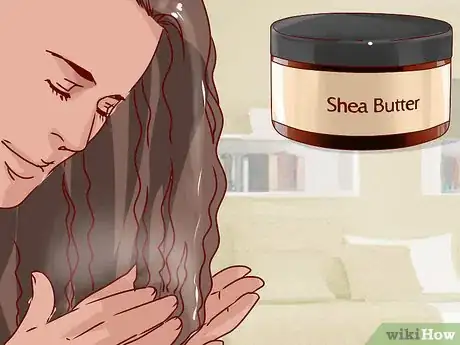
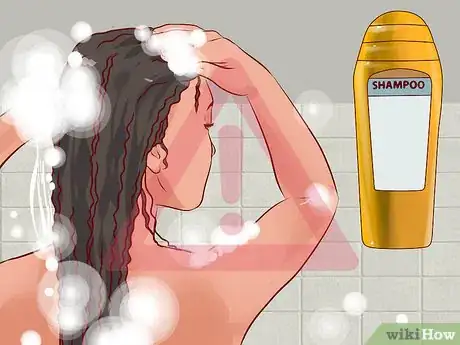

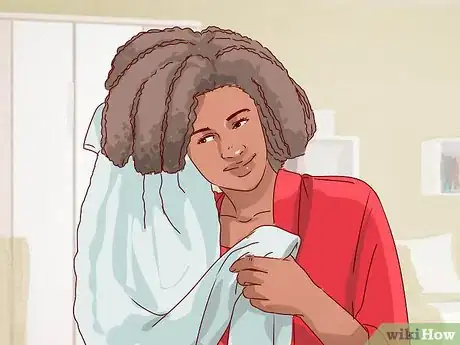
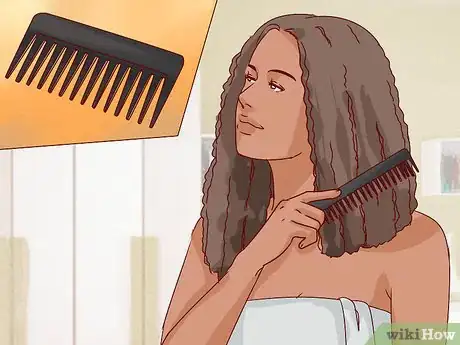
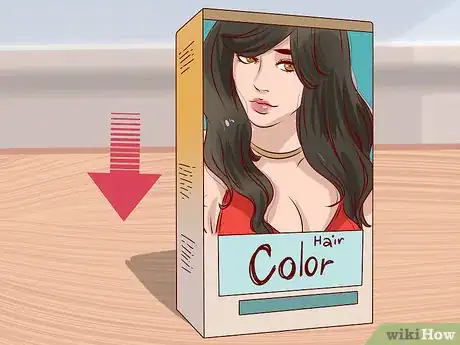
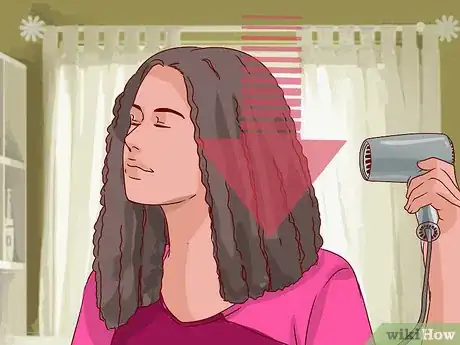

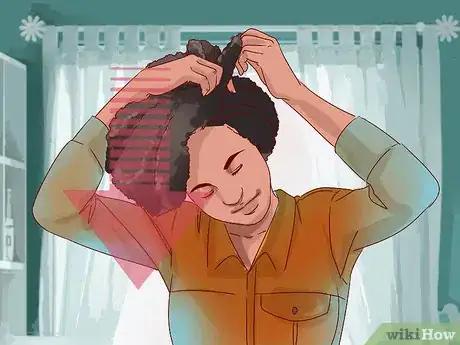
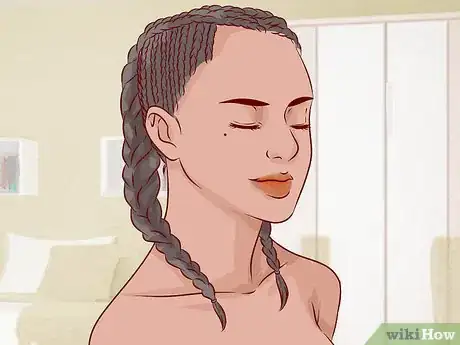
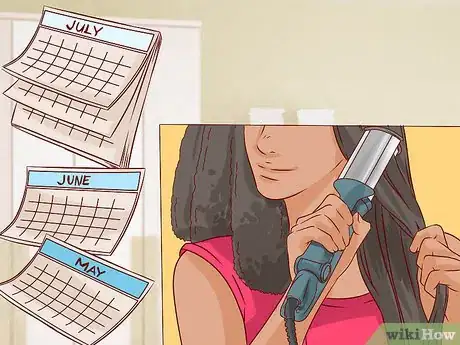
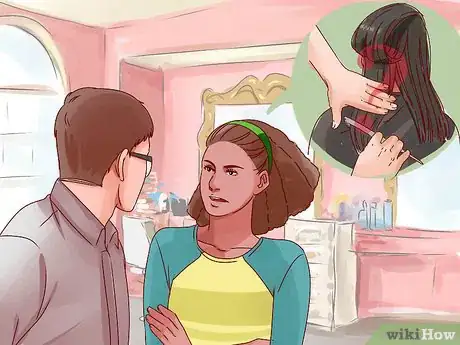

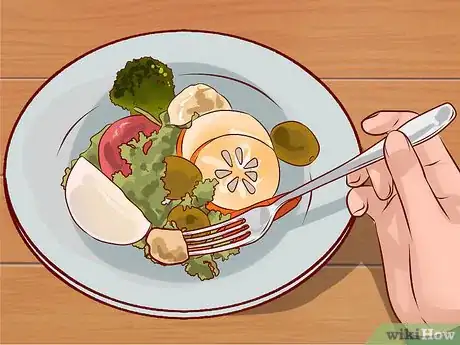

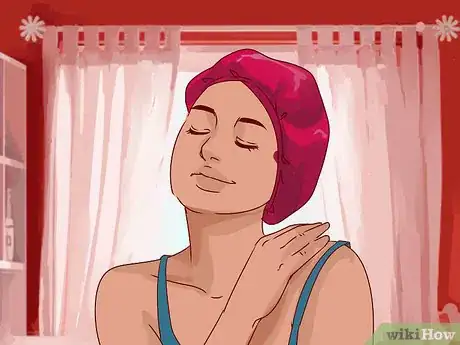
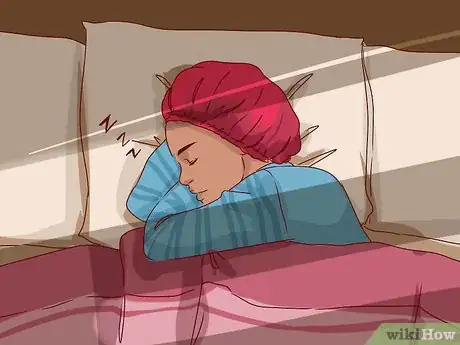

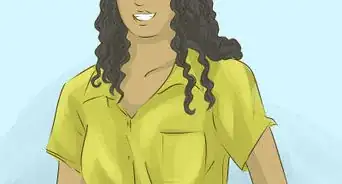

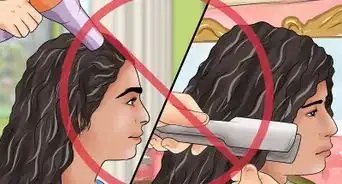
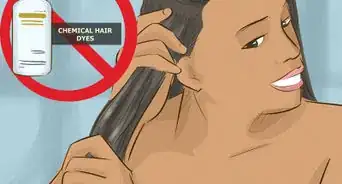




-Step-20.webp)












